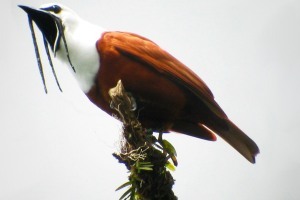The Phylum Arthropoda is a very diverse group. For this reason, and due to research related to kinship between organisms, there are several proposals regarding their classification. Among them, there is one in which its representatives are divided into three Sub-Philos: the Crustacea, Chelicerata and Uniramia.
The first house crabs, crabs, shrimp, among others. The chelicerates are spiders, scorpions, mites, etc. As for the uniramios, their best known representatives belong to the Classes Insecta, Chilopoda and Diplopoda.
Most insects are terrestrial and, among all invertebrate groups, only the Class Insecta harbors flying species. The wings may be absent, present in two or four pairs, or appear only at specific times in the life cycle.
Its representatives have the body divided into head, chest and abdomen. They have three pairs of legs, one pair of antennae, one pair of compound eyes, three single eyes and appendages. buccal, formed by a pair of mandibles and two of maxillas, and that vary according to the ecological niche of the animal. They excrete uric acid; and their diet is varied: some are herbivores, others carnivores, detritivores, etc.
Some examples of insects; dragonflies, cockroaches, termites, crickets, lice, barbers, aphids, beetles, bees, mosquitoes, fleas and butterflies.
Do not stop now... There's more after the advertising ;)
Centipedes and centipedes belong to the Chilopoda Class, presenting a flat body, divided into head and trunk. There are a pair of long legs on each segment of its body, the first being modified into a poison-containing structure, the forcipule. Thanks to it, the animal can capture its prey more easily.
On the other hand, snake lice, or embuás, belonging to the Diplopoda class, are herbivores or detritivores. The body is rounded, divided into a head, short thorax and long abdomen. On the chest there are four metamers, each of the last three having a pair of short legs. In the abdomen, two pairs of short legs are found in each segment, and the forcipula is absent.
Both chilopods and millipedes have only one pair of antennae, one pair of mandibles, and one or two pairs of jaws. In this classification system, these two groups belong to the Myriapoda Superclass. For other authors, in different classifications, this name, and group, receive the status of Subphylum.
By Mariana Araguaia
Graduated in Biology
Brazil School Team
Invertebrates -Animals -Brazil School


